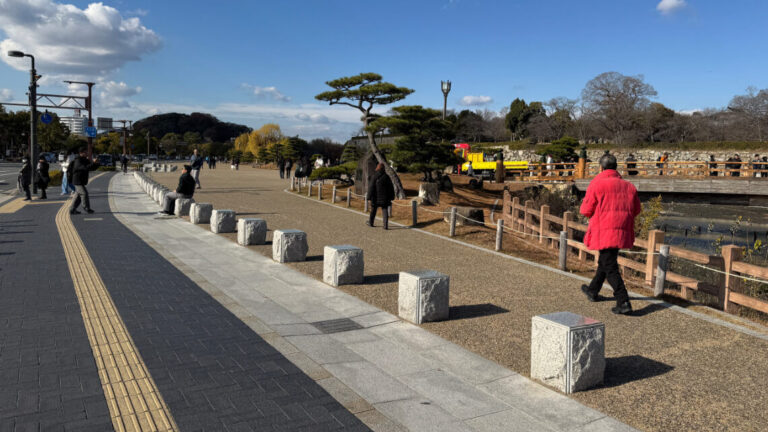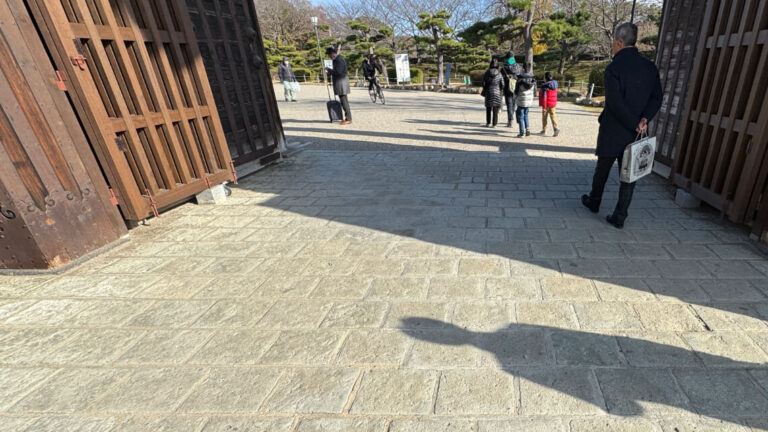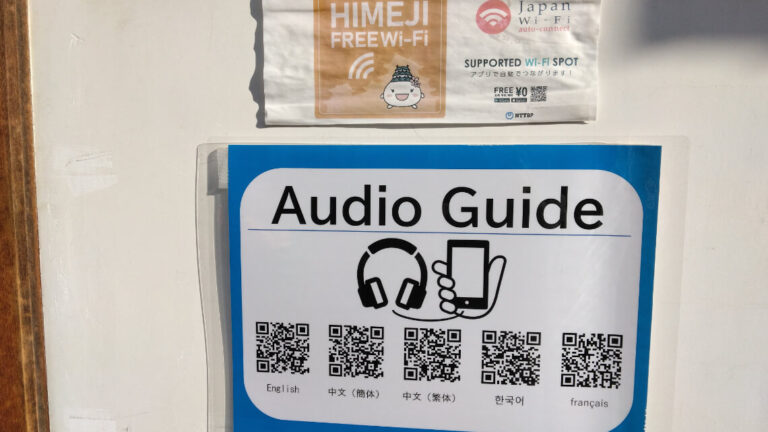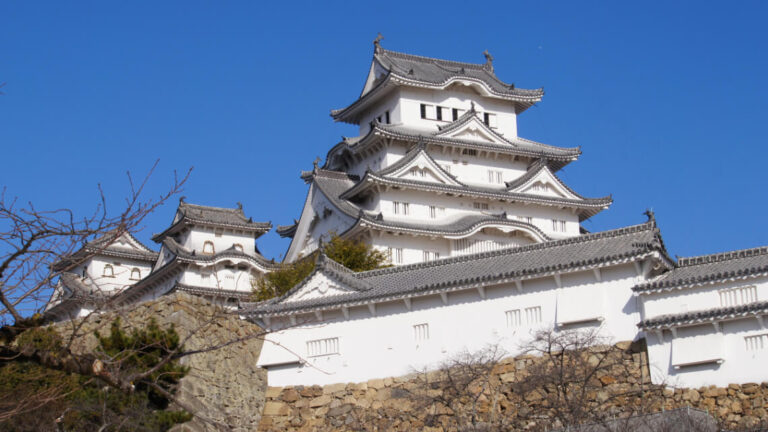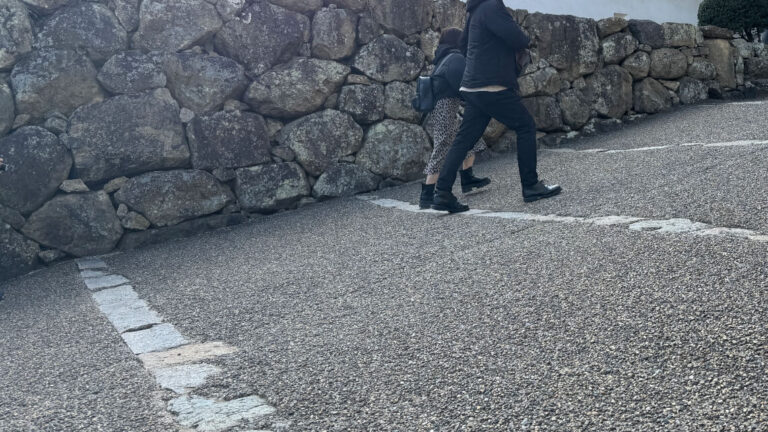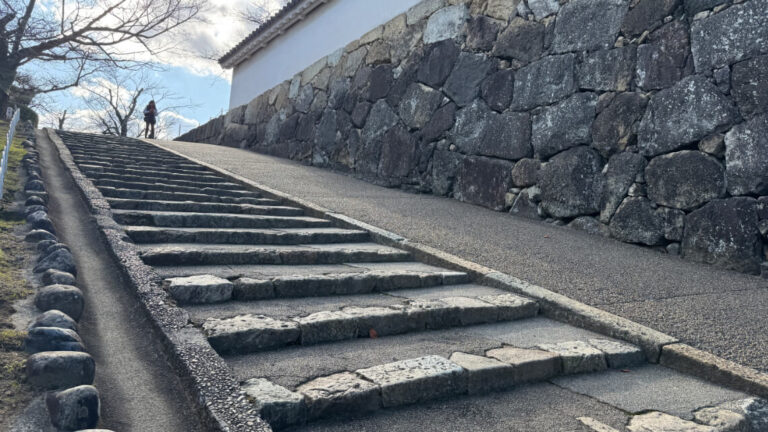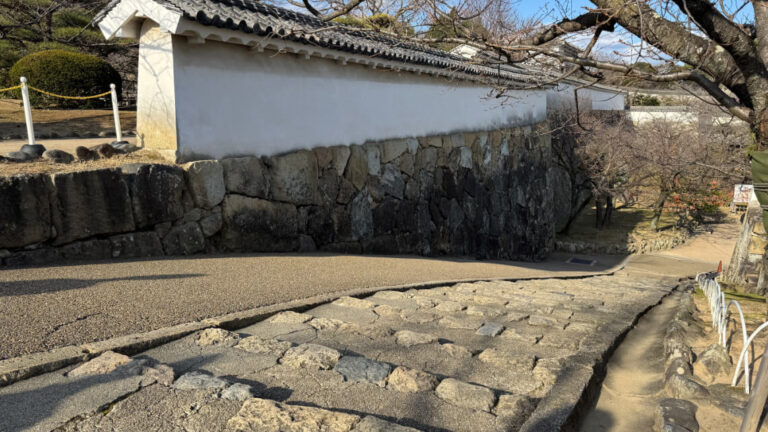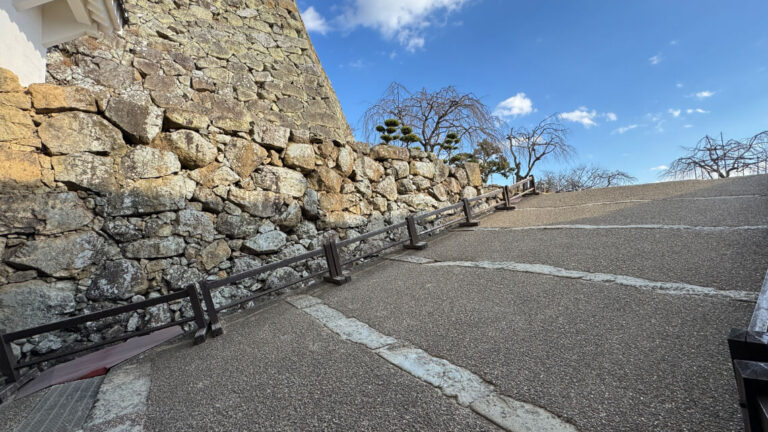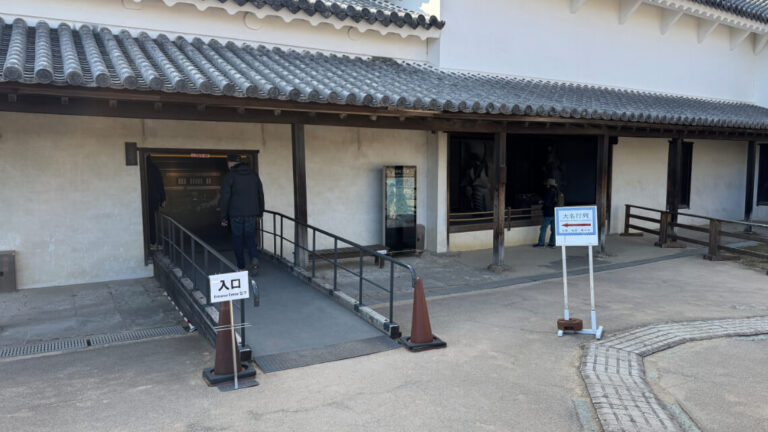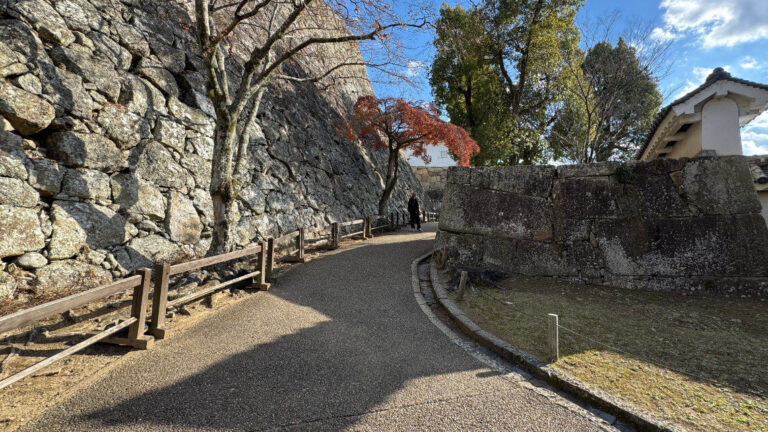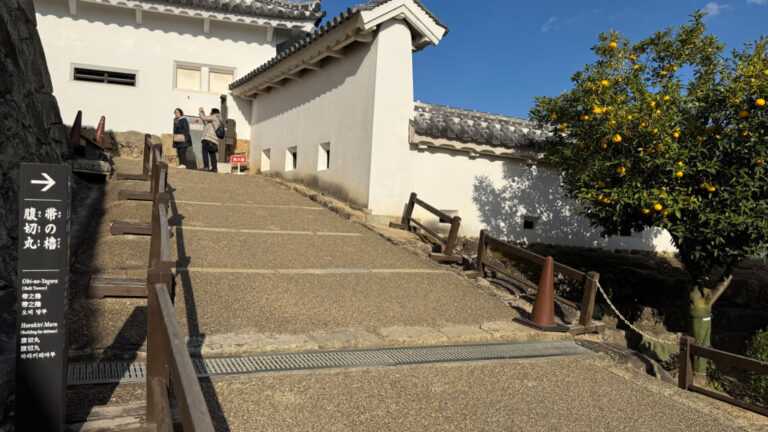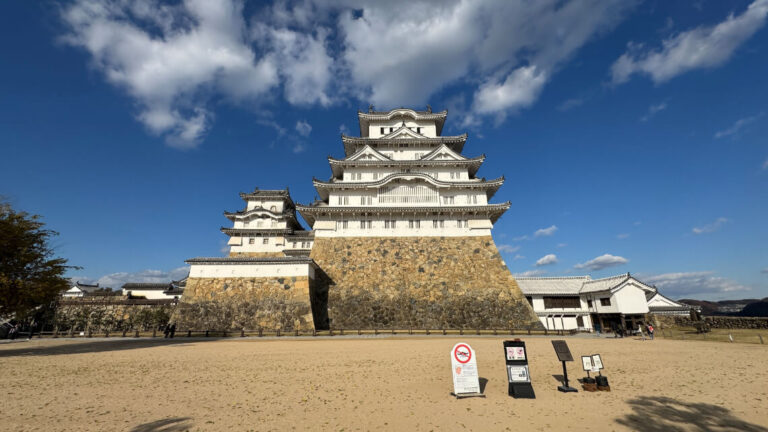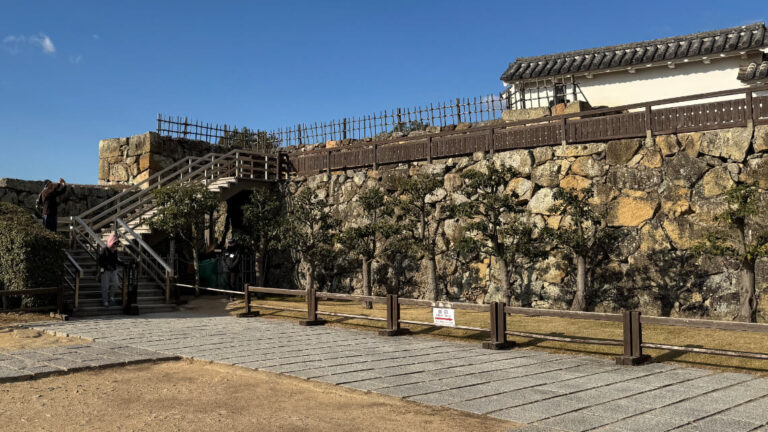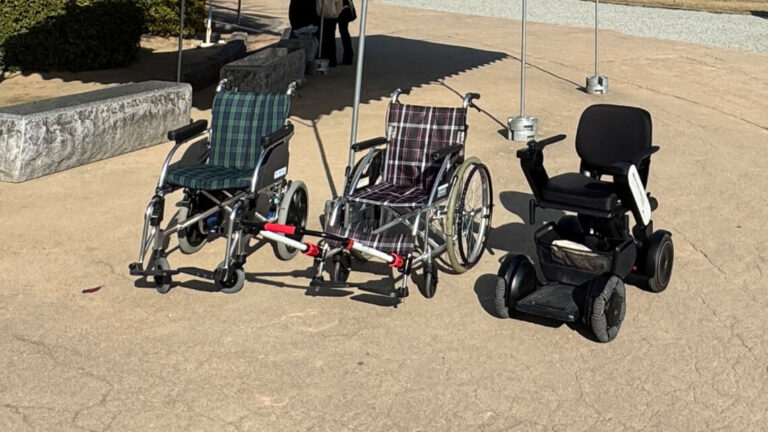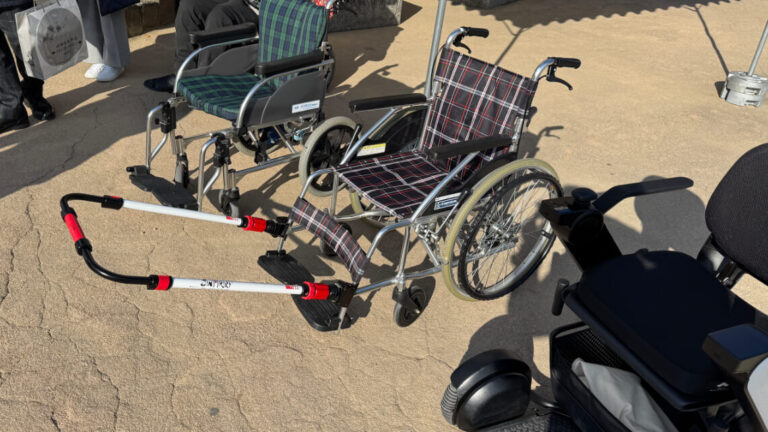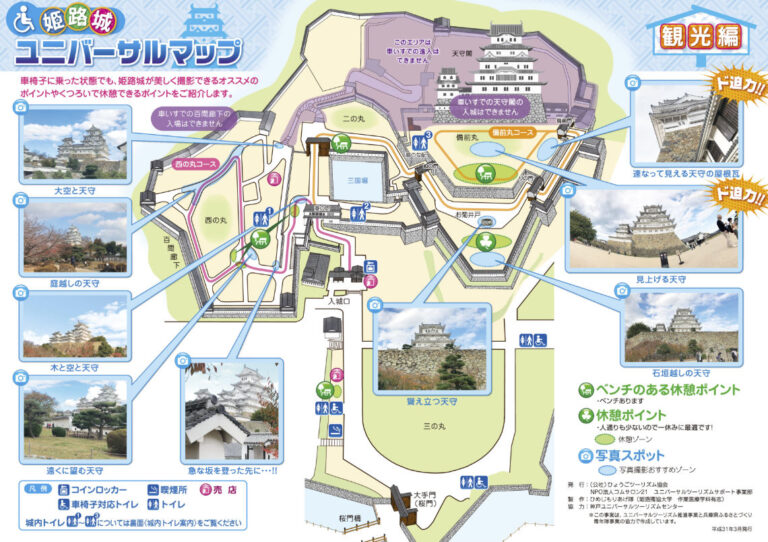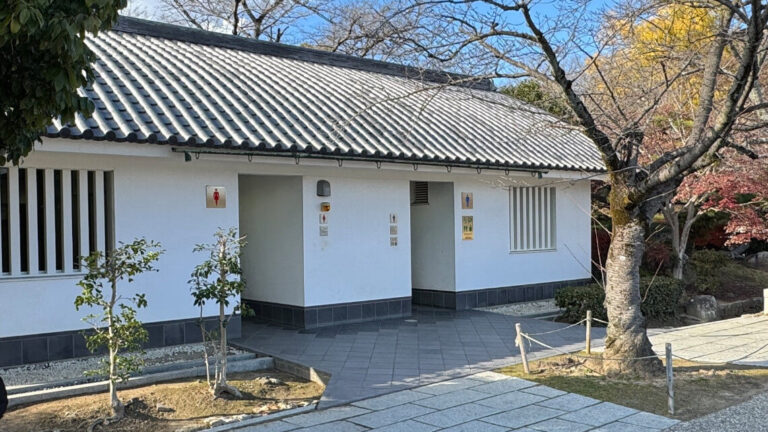- Overview

Himeji Castle, known as White Heron Castle for its elegant white facade, is a UNESCO World Heritage Site and a stunning example of Japanese castle architecture. While the steep and uneven paths within the castle grounds can be challenging, with some support, wheelchair users can explore many parts, including the outer grounds and key areas near the main keep.
General Information
Himeji Castle, also known as White Heron Castle due to its striking white exterior, is one of Japan’s most iconic and best-preserved castles. Located in Himeji City, Hyōgo Prefecture, it is widely recognized as a masterpiece of Japanese castle architecture and is a designated UNESCO World Heritage Site since 1993. The castle’s origins date back to 1333 when it was initially constructed as a fort by Akamatsu Norimura. Over the centuries, it underwent multiple expansions and renovations, culminating in its current form in 1609 under Ikeda Terumasa. Despite surviving natural disasters, wars, and modernization efforts, the castle remains largely intact, offering a rare glimpse into feudal Japan.
Himeji Castle consists of 82 national treasures and important cultural properties, including the main keep, turrets, gates, and earthen walls, all of which are interconnected to form a complex yet highly defensive structure. The main keep, standing at 46 meters, is an impressive architectural highlight with intricate defensive features such as maze-like pathways to confuse intruders, steep stone walls, and hidden compartments for ambushes. While exploring the keep’s interior is an option, visitors can also appreciate the exterior and surrounding areas, which are rich in history and offer scenic views. Nearby, Kōko-en Garden provides a tranquil escape with traditional Japanese landscaping, tea houses, and ponds, making it a perfect complement to the historical experience.

In addition to its architectural brilliance, Himeji Castle has been featured prominently in several Western films, highlighting its cultural importance. Notably, it appeared in the James Bond film You Only Live Twice (1967) as a ninja training school and in The Last Samurai (2003) starring Tom Cruise, showcasing the castle’s role in depicting feudal-era Japan. These appearances have helped cement its status as an internationally recognized symbol of Japanese heritage. The castle is open daily from 9:00 AM to 5:00 PM (last admission at 4:00 PM), with extended hours during the summer. The admission fee for adults is ¥1,000, and combination tickets that include nearby Kokoen Garden are available for ¥1,050. The castle is closed over the New Year Holidays.
Be sure to check the castle’s website for the latest information on times and admission fees.
Getting There
Himeji Castle is about a 20-minute walk from Himeji Station, served by the JR Sanyo Shinkansen, JR Kobe Line, and Sanyo Electric Railway. The Himeji Castle Loop Bus also stops near the garden. Himeji Station has elevators and accessible toilets available and the buses running between the garden and Himeji Station are wheelchair accessible.
Accessibility
Himeji Castle provides various accessibility features to accommodate visitors with different needs. For individuals with visual impairments, tactile blocks are placed leading up to the entrance of the castle grounds to facilitate navigation (though not in the castle grounds). English-language audio guides are available to provide auditory information about the site.

There is English signage, but its presence is limited and includes few pictograms, which may reduce its effectiveness for some visitors.
The sensory environment of Himeji Castle is characterized by low noise levels, absence of bright lights, and lack of strong smells, creating a less stimulating atmosphere. The grounds generally provide enough space to avoid crowding, although congestion may occur during busy periods such as the cherry blossom season, particularly within the castle keep where space is limited.
The outer castle grounds feature flat and smooth pathways that are suitable for wheelchair use up to the ticket gate, offering ease of navigation for many visitors. However, once past this point, the some of the paths become significantly steeper and uneven, with textured ridges that can pose challenges for wheelchair users. Assistance is often required for both manual and powered wheelchairs due to the incline and surface conditions.

Wheelchair users can access Nishi no Maru as well as Bizenmaru at the base of the keep with help, but beyond this, access is restricted to stairs. The stairs within the keep, while extremely steep, are equipped with handrails to aid mobility for those able to ascend them.
Some additional ramps have been installed in the display room following the Nunomon Gate, allowing access to the historical information there.
The Himeji Universal Tourism Center, offers various services, including wheelchair rentals and motorized wheelchair options. Advanced arrangements are recommended to ensure the availability of appropriate assistance. Their website, while only available in Japanese has area maps, maps of the castle, and informational videos on their YouTube channel provide guidance on navigating the steep pathways.

There are three accessible toilets located around the Sannomaru area outside the main castle ticket entrance. These toilets are equipped with handrails, backrests, ostomate-friendly sink, and baby-changing tables.
- AccessPhone: +81-79-285-1146
No Records Found
Sorry, no records were found. Please adjust your search criteria and try again.
Google Map Not Loaded
Sorry, unable to load Google Maps API.
- Photos
- Reviews
- Nearby Hotels
No listings were found matching your selection.
Have a question?
We try our best to provide information to a wide audience. But everyone has different needs.
If you have some specific questions about this listing, come join us on Tabifolk in the Japan group and we will get you the information you need!
Share your pictures of your trip or look up the accessibility of your next location with SIM cards or pocket WiFi!






